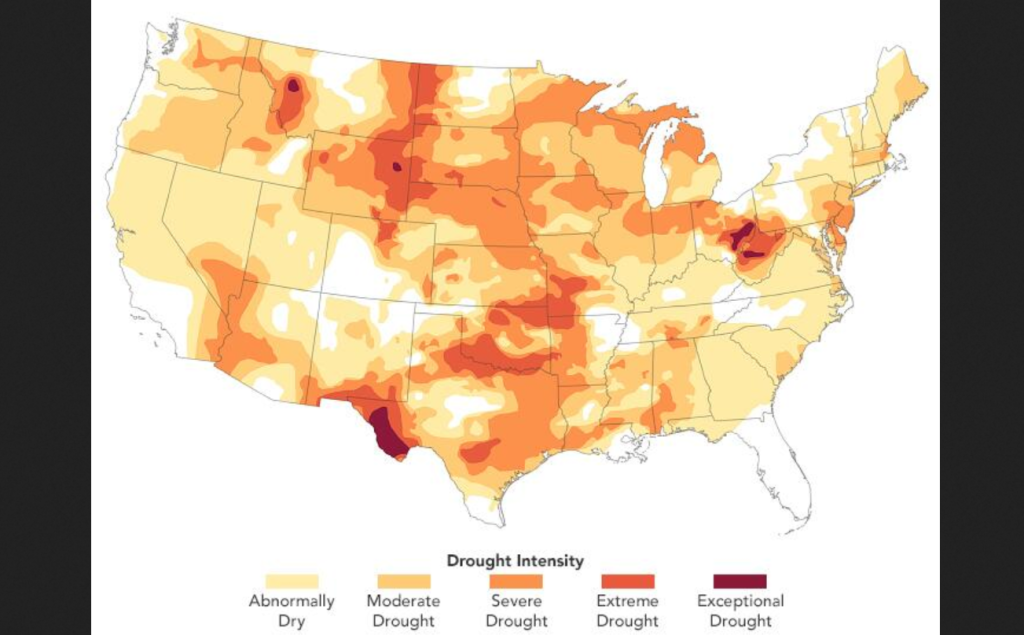A significant high-pressure system hovering over North America has led to widespread dryness across the continental United States, resulting in severe drought conditions affecting a large portion of the population and causing detrimental impacts on agricultural production, particularly crops and livestock pastures. According to the latest data from the US Drought Monitor, a staggering 78% of the population now resides in regions experiencing “abnormal dryness and drought,” underscoring the dire situation as highlighted by NASA Earth Observatory. This alarming statistic is a direct consequence of warmer and drier than normal weather patterns that characterized much of October, caused by a persistent ridge of high pressure in the atmosphere.
The implications of this developing weather phenomenon are profound, as October data reveals dire conditions across numerous weather stations. In fact, over 100 stations recorded a complete absence of precipitation during the month, affecting major urban areas including Philadelphia, Atlanta, and Dallas. Several locations also experienced their driest October on record, which has triggered a significant increase in the coverage of drought conditions throughout the country—from just 12% in June to an overwhelming 54% by the end of October. The rapid onset of what’s classified as “flash droughts” highlights the alarming reality that this worsening drought is exacerbated by insufficient rainfall coupled with unusually high temperatures and other factors like wind and radiation.
The agricultural sector feels the brunt of these adverse conditions particularly in the grain markets, especially concerning winter wheat production. Bloomberg’s recent assessments suggest that drought conditions in key farming regions are poised to significantly affect the production of this essential cereal grain. The US Department of Agriculture is set to release crucial reports detailing the state of the wheat crop—a situation unfolding at a historically bad juncture due to sustained drought. Additionally, speculation surrounds potential reductions in wheat export supplies from top exporter Russia, further fueling market anxieties that are already affecting wheat futures trading.
Critically, there has been a notable absence of discussions in the mainstream media regarding the influence of natural disasters—specifically the 2022 Hunga Tonga volcanic eruption—on global weather patterns. While commentary around adverse weather often points to human-induced climate change as a primary cause, it raises questions about the exploration of alternative explanations that could shed light on the complexities of our climate system. Such volcanic activity, which has the potential to disrupt atmospheric conditions significantly, deserves more consideration as part of the broader discourse surrounding current weather disturbances.
The interplay of high-pressure systems, shifting climate patterns, and the resulting drought conditions presents a multifaceted challenge for policymakers and agricultural businesses alike. With nearly 80% of the population experiencing varying degrees of droughtiness, there is an urgent need for the agricultural community to adapt to these perils. Farmers are faced with the dual challenge of nurturing crops under severe water restrictions while simultaneously managing their economic viability in an increasingly precarious environment marked by unpredictable weather patterns.
This situation underscores the pressing need for integrated approaches that incorporate climate science, agricultural practices, and media narratives to facilitate informed discussions about weather-related extremes and their long-term implications. The effects of this emerging drought crisis will likely reverberate through economic and food security concerns, making it imperative for stakeholders across government, agriculture, and research sectors to work collaboratively to devise effective solutions and sustainable practices that address both the immediate threats and future climate uncertainties.

